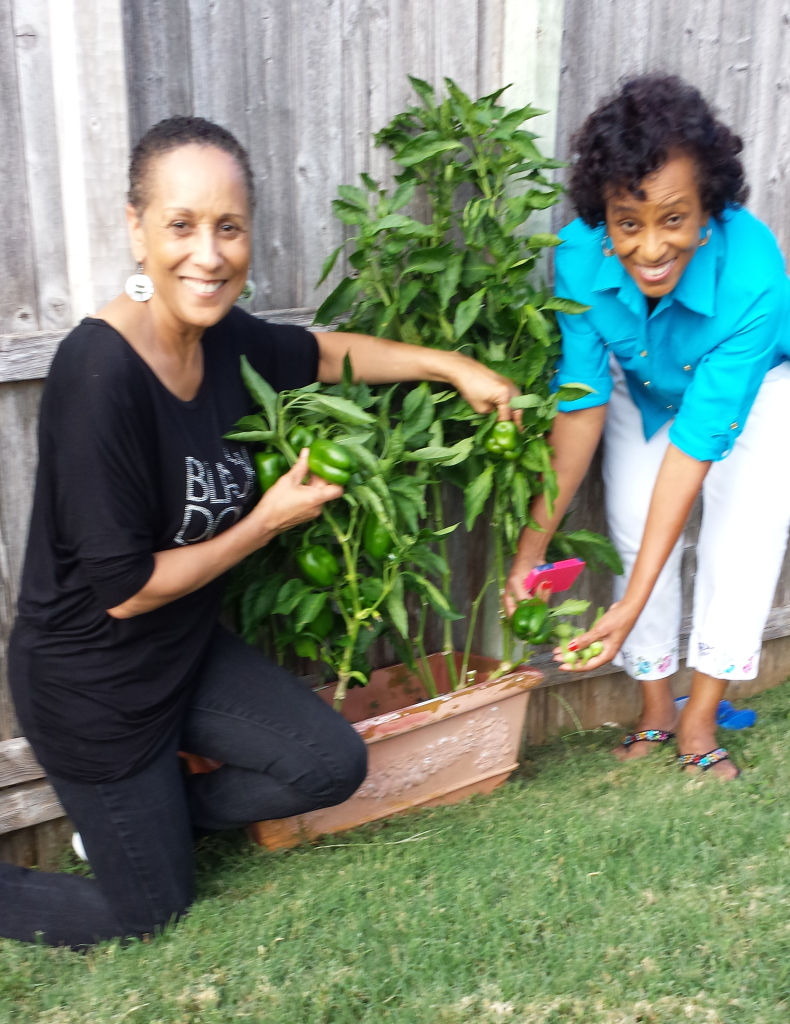
Freezing 101
Freezing Bell Peppers and Onions
Freezing chopped peppers and onions is a great way to enjoy garden produce when summer days are long gone. Store frozen green peppers and onions in re-sealable freezer bags. Green peppers can be frozen for up to 6 months, and onions can be frozen up to 1 year.
Just picked bell peppers from my garden and from my sister Agnes’ garden (in the pic below). We both had bell peppers in our summer and fall gardens. I still have several peppers growing, and they are so easy to grow. Check out the small pot that Agnes and I are picking from. No yard – no worry! Plan to freeze what I don’t eat, but might not be much left. So delicious!
What doesn’t freeze well?
The quality and texture of certain items just don’t hold up after they are defrosted. I bet you’ve had this happen from time to time.
Casseroles – made with mayonnaise, sour cream, yogurt or cream cheese will separate after thawing and might have an unappetizing, watery texture or curdled look.
Raw Produce – with high water content, such as cabbage, celery, lettuce, other leafy greens, cucumbers, radishes, watermelon, tomatoes and citrus fruits, become limp and waterlogged after thawing.
Cooked Potatoes – used in dishes like salads, soups or stews become soft, mealy and waterlogged after thawing. But mashed and twice-baked potatoes freeze well.
Cooked Pasta – used in soups or added to sauces before freezing may be soft and mushy after defrosting. For best results, undercook pasta before cooling and freezing.
Freezing Okra
Wash it, blanch it, cool it quickly and drain it on a paper towel. I like to slice mine, arrange it on a baking sheet lined with parchment paper and place it in the freezer until it’s frozen. Then once frozen, I just place it in a heavy duty re-sealable plastic bag and return it to the freezer. And then pull out the amount I need for my recipe. When frozen this way, the okra is not all clumped together and you can remove individual pieces.
Where to Place Items in Your Freezer
I finally invested in a small deep freezer and it has become invaluable. But if you don’t have a deep freezer and are using the freezer attached to your refrigerator, here are a couple of good tips I’ve either learned on my own, or picked up from Taste of Home.
Keep Them Cold
Store meats and berries near the bottom or back of the freezer, where it is the coldest. If there is a power outage and food begins to thaw, the drips of water won’t leak onto the other food.
The Door
Because the door is opened so often, it’s warmer than other areas and best suited for freezing things like nuts, flour, juice and dairy products.
What Goes in the Far Back of the Freezer?
Here’s where you should put new unfrozen items because that’s where the freezer is the coldest. The low temps will help your food freeze quickly, preventing those dreaded ice crystals from forming on your food.



